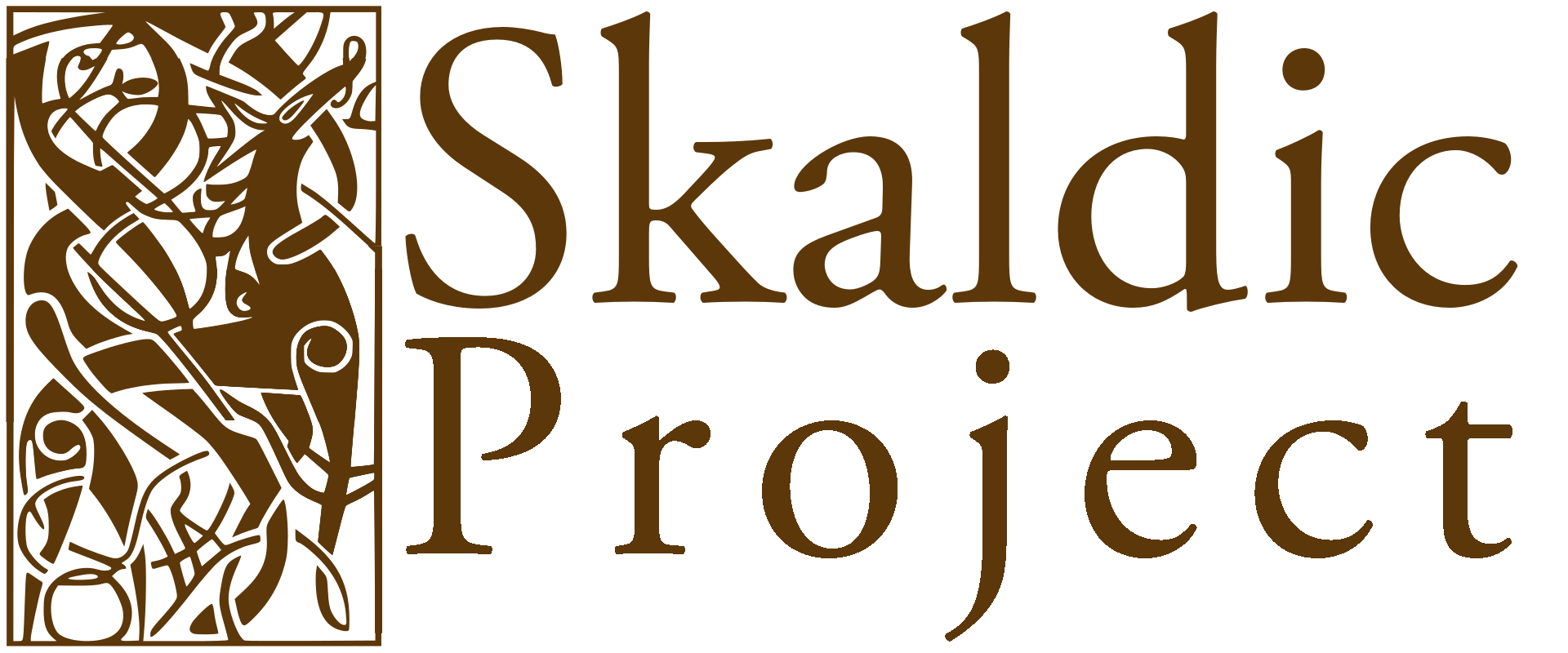Note to Anon Lil 90VII
[5-6] þú ert hitnandi höll heilags anda ‘you are the warm hall of the Holy Spirit’: The kenning-like phrase hitnandi höll heilags anda has been interpreted variously. Translations include tu es Spiritu sancto incalescens aula ‘you are the warming hall for the Holy Spirit’ (Finnur Jónsson 1772-8, II, 441), ‘the warm Holy Spirit’s hall’ (Eiríkur Magnússon 1870, 91), Prunkpalast des heil’gen Geistes ‘magnificent palace of the Holy Spirit’ (Baumgartner 1884, 68), aandens glødende bolig ‘the glowing dwelling of the Spirit’ (Paasche 1915, 90), den hellig [sic] ånds varme hal ‘the warm hall of the Holy Spirit’ (Skj B), Du bist die warme Wohnung des Heiligen Geistes ‘you are the warm dwelling of the Holy Spirit’ (Lange 1958b, 71) and du er heten i Heilagandens hal ‘you are the warmth in the hall of the Holy Spirit’ (Ødegård 1980, 87). Meissner’s translation (1922, 33), im heiligen Geiste du erglühende, Halle des Herrn, so reich geschmückte ‘you are glowing with the Holy Spirit, dwelling of the Lord, so richly ornamented’, reflects the construction þú ert hitnandi heilags anda, höll og prýdd með dáðum öllum. Meissner apparently did not regard hitnandi heilags anda höll as a kenning: it does not appear in Die Kennningar der Skalden, although he cites examples of analogous kennings of the type ‘hall of God’ (Meissner 424). These circumlocutions are based on the image of Mary as the Theotokos who bore Jesus in her womb (Die Jungfrau, in der der Erlöser beschlossen liegt, is Gottes Haus, Halle, sein Münster, Schrein oder Hochsitz). Meissner cites one example of Mary as the dwelling of the Holy Spirit: she is called sæti heilags anda ‘seat of the Holy Spirit’ in Mgr 2/4 (Meissner 424), and cf. the poem Heilags anda ho᷎llin glæst (ÍM II, 70-2).
References
- Bibliography
- Skj B = Finnur Jónsson, ed. 1912-15b. Den norsk-islandske skjaldedigtning. B: Rettet tekst. 2 vols. Copenhagen: Villadsen & Christensen. Rpt. 1973. Copenhagen: Rosenkilde & Bagger.
- Meissner = Meissner, Rudolf. 1921. Die Kenningar der Skalden: Ein Beitrag zur skaldischen Poetik. Rheinische Beiträge und Hülfsbücher zur germanischen Philologie und Volkskunde 1. Bonn and Leipzig: Schroeder. Rpt. 1984. Hildesheim etc.: Olms.
- Baumgartner, Alexander, trans. 1884. Die Lilie: Isländische Mariendichtung aus dem 14. Jahrhundert. Freiburg im Breisgau: Herder.
- Ødegård, Knut, trans. 1980. Lilja. Oslo: Tiden.
- Finnur Jónsson [Finnus Iohannaeus]. 1772-8. Historia Ecclesiastica Islandiae. 4 vols. Copenhagen.
- ÍM = Jón Helgason, ed. 1936-8. Íslenzk miðaldarkvæði: Islandske digte fra senmiddelalderen. 2 vols. Copenhagen: Munksgaard.
- Lange, Wolfgang. 1958b. Christliche Skaldendichtung. Kleine Vandenhoeck-Reihe 54. Göttingen: Vandenhoeck and Ruprecht.
- Internal references
- Kari Ellen Gade (ed.) 2007, ‘Anonymous Poems, Drápa af Máríugrát 2’ in Margaret Clunies Ross (ed.), Poetry on Christian Subjects. Skaldic Poetry of the Scandinavian Middle Ages 7. Turnhout: Brepols, pp. 760-1.
